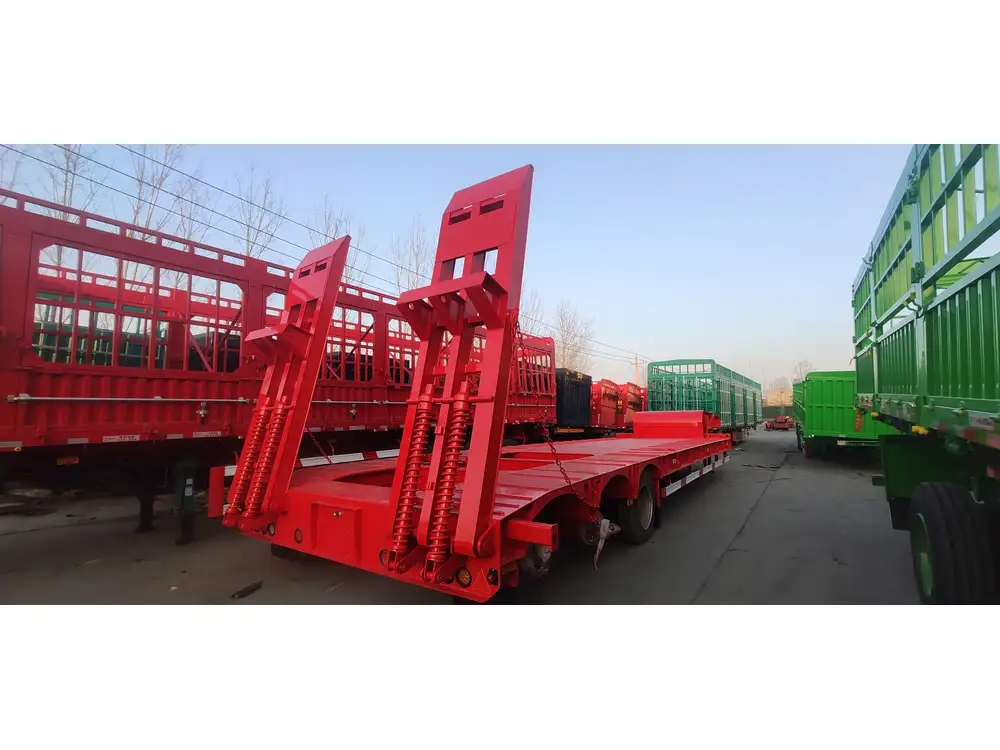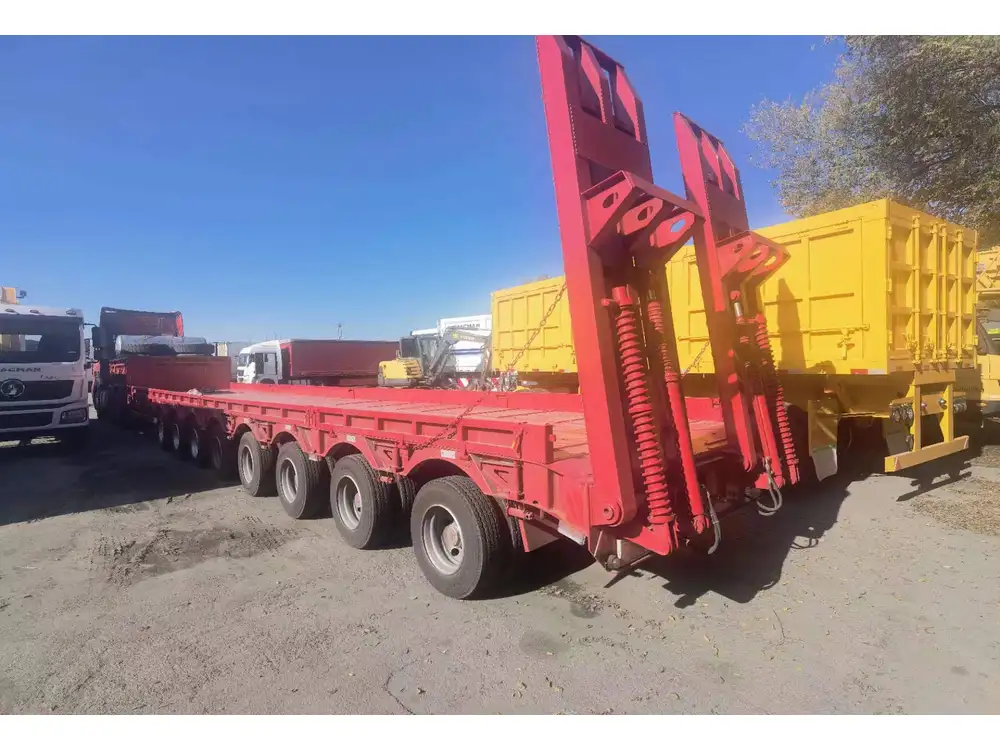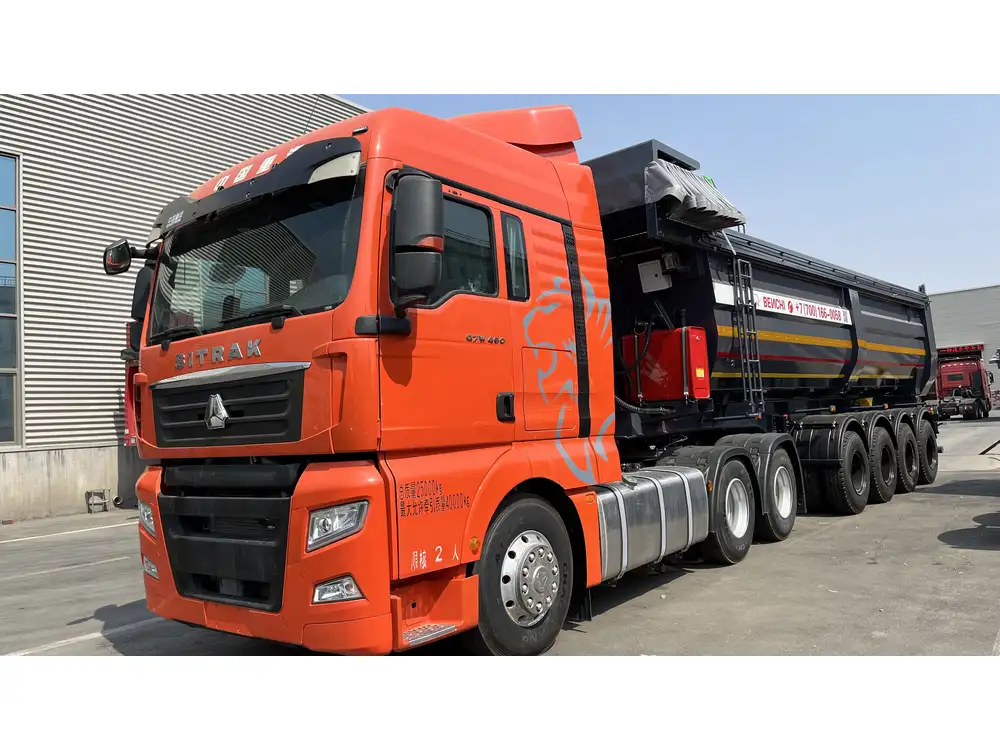Understanding how many pallets can fit in a semi-trailer is essential for logistics planning, cost efficiency, and optimizing your supply chain management. This guide provides an in-depth exploration of various semi-trailer configurations, pallet dimensions, and loading principles crucial for maximizing payload capacity while ensuring safety and compliance.
Understanding Semi-Trailer Dimensions
Common Semi-Trailer Types
To determine how many pallets a semi-trailer can accommodate, we first need to examine the standard types of trailers and their dimensions:
| Type of Trailer | Typical Length (Feet) | Width (Feet) | Height (Feet) |
|---|---|---|---|
| Standard Dry Van | 53 | 8.5 | 13.5 |
| Reefer (Refrigerated) | 53 | 8.5 | 13.5 |
| Flatbed | 48 or 53 | 8.5 | 5 (average) |
| Step Deck | 48 or 53 | 8.5 | 5 – 8.5 |
Each type of trailer provides distinct functionality based on cargo requirements, contributing to the overall pallet capacity.
Pallet Dimensions and Types
To accurately calculate how many pallets can fit into a semi-trailer, one must also understand the size of the pallets being used. The most common pallet sizes are:
| Pallet Type | Dimensions (Inches) | Dimensions (Feet) | Cubic Feet |
|---|---|---|---|
| Standard (GMA) | 48 x 40 | 4 x 3.33 | 12.67 |
| Euro Pallet | 47.2 x 31.5 | 3.93 x 2.63 | 9.15 |
| Block Pallet | 48 x 48 | 4 x 4 | 16 |
| Industrial Pallet | 42 x 42 | 3.5 x 3.5 | 10.5 |
By understanding both pallet and trailer dimensions, we can derive the potential loading capacity.

Calculating Pallet Capacity
1. Standard Dry Van Trailer
For a standard 53-foot dry van semi-trailer, let’s calculate how many standard 48 x 40-inch pallets can fit:
- Total Trailer Area: 53 ft length × 8.5 ft width = 450.5 sq ft
- Single Pallet Area: 4 ft × 3.33 ft = 13.33 sq ft
- Number of Pallets: 450.5 sq ft / 13.33 sq ft/pallet = 33.75
Thus, a 53-foot dry van can fit approximately 33 standard pallets if arranged efficiently. However, considering operational restrictions, the practical number is typically around 26 to 28 pallets.
2. Reefer Trailer
Reefer trailers allow for the same calculation as dry vans, as they share similar dimensions:
- Loading Capacity: Approximately 28 pallets (after accounting for airflow and refrigeration units).

3. Flatbed Trailer
Calculating for a flatbed trailer is slightly different due to its open structure, allowing for varied stacking of pallets:
- Total Area: While flatbed trailers usually have the same width, their length can be either 48 or 53 feet.
- Pallet Fit: Flatbeds can accommodate pallets either stacked or laid out flat, usually around 26-28 pallets when efficiently organized.
4. Step Deck Trailer
Step deck trailers have a lower deck height and are beneficial for carrying taller loads:
- Capacity: Up to 24 standard pallets, considering weight distribution and lowering facility height.
Factors Influencing Pallet Capacity
The potential number of pallets you can load into a semi-trailer depends on several factors. Below are some of the most significant:

1. Weight Limitations
Each trailer type has a maximum gross weight limit, often governed by federal regulations, typically around 80,000 lbs. Different pallet contents weigh various amounts, significantly influencing how many can be loaded. For example:
| Pallet Type | Average Weight (lbs) | Total Weight for 28 Pallets |
|---|---|---|
| Standard (GMA) | 50 | 1,400 |
| Euro Pallet | 48 | 1,344 |
| Block Pallet | 70 | 1,960 |
2. Load Configuration
Efficiently arranging pallets within the trailer can maximize space. Consider the following configurations:
- Straight Load: Pallets aligned horizontally.
- Double Stacking: Requires weight distribution methods and may not be allowed based on product type.
3. Regulatory Compliance
Adhering to local and federal transportation regulations, such as weight limits and maximum height, may necessitate decreasing the number of pallets loaded.

4. Practical Handling Considerations
When considering loading, unloading, and transport, operational dynamics such as:
- Forklift Availability
- Driver Training
- Loading Dock Space
can limit trailer capacity.
Best Practices for Optimizing Pallet Loading
To maximize efficiency and safety when loading pallets into a semi-trailer, follow these best practices:
Use of Pallet Jacks and Forklifts
Utilizing proper equipment can enhance loading efficiency, ensuring pallets are positioned correctly for safe transport.

Implement Load Distribution Protocols
Proper weight distribution is essential for safe driving. Centralize heavier items within the trailer and place lighter items at the back.
Regular Training and Safety Protocols
Train logistics staff on loading uniqueness, handling rules, and safe practices to prevent accidents.
Consider Load Security
Invest in necessary securing equipment like straps and nets to prevent shifting during transport.

Frequent Fleet Assessments
Regular assessments and maintenance of the fleet ensure that style or dimension shifts in the industry do not hinder operational productivity.
Addressing Common Questions
What Factors Affect the Number of Pallets?
Each functional variant—weight, configuration, loading method—will directly affect final capacity.

Are There Legal Regulations Pertaining to Pallet Loading?
Yes, local transport laws specify limits on weight distribution, height per load, and the securing method.
How Often Should Pallet Sizes be Reassessed?
Ideally, reassess pallet sizes seasonally, especially if your product line changes.
Can I Use Non-Standard Pallets?
Certainly! However, adjustments in capacity calculations and handling processes are mandatory.

Conclusion
A thorough understanding of how many pallets fit in a semi-trailer is foundational for effective supply chain management. By considering trailer types, pallet configurations, weight limitations, and insightful best practices, we can enhance operational efficiency and ensure compliance with legal standards. Crafting a meticulous approach to loading pallets into semi-trailers not only optimizes costs but also contributes to overall logistical success, ultimately bolstering your manufacturing operations in the semi-trailer industry.



